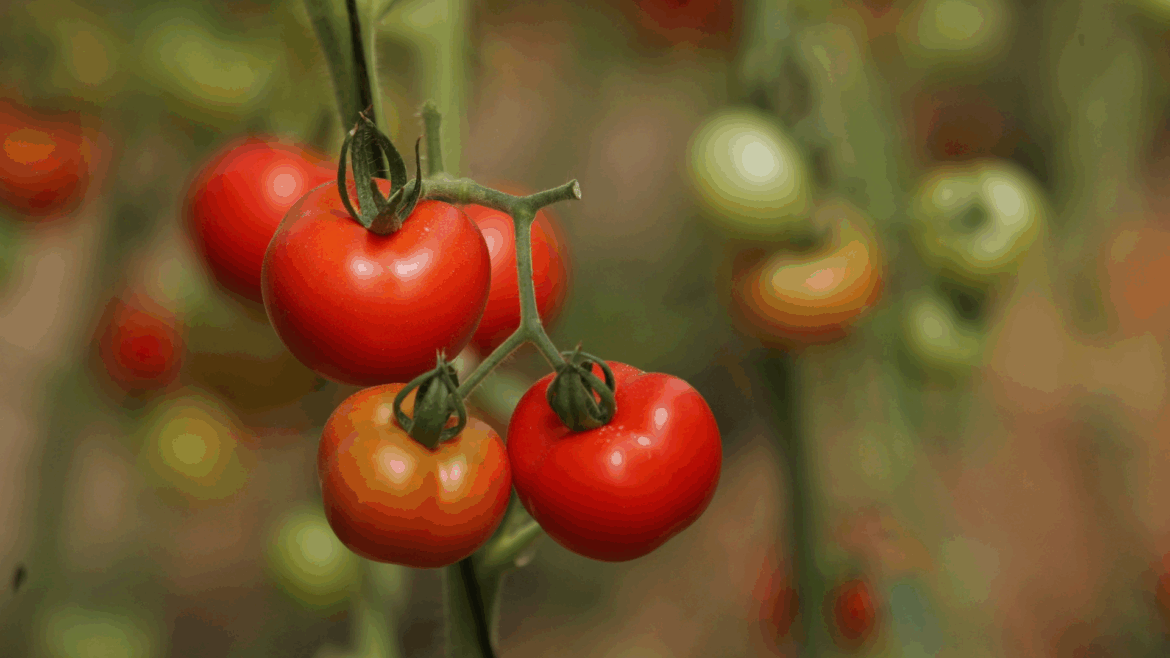SALT LAKE CITY — As the temperatures are going up to the 70s and 80s, it’s time to plant those tomatoes you’ve been waiting to grow.
Before transplanting your tomatoes, you need to check your soil temperature and make sure it’s warmer than 60 degrees Fahrenheit. You can do this by sticking a kitchen thermometer into the soil and leaving it in for about five minutes.
“If the soil temperatures are 50 or 55 (degrees), your tomatoes won’t grow. They’ll sit there … until the soil is warm enough,” said KSL Greenhouse Host Taun Beddes.
If the tomatoes are not overgrown, they can stay in their containers.
“If they’re in a pony pack, like a four or a six pack, and they’re only 6 inches tall, they’re probably fine. But if they’re a foot tall, they’ll hold for a few days, but they actually—if they’re in that container too long—will start to decline,” Beddes said.
According to Beddes, those taller tomatoes can be planted deeper and more horizontally. He recommended digging a trench 6 inches to a foot long and laying the tomatoes on their sides.
“And then you gently bring the stem end up toward the top, and that’s going to be your new plant. But you can bury that stem in the soil, and the buds will form new roots.”
Make sure to space your tomatoes
It’s important to space your tomatoes so that they don’t take over each other’s space.
For determinate tomatoes such as the Better Boy and the Celebrity, you can place them apart every 2 1/2 feet. Once they grow about 3 feet tall, they will produce lots of fruit, giving you about 80% of your tomatoes within two weeks.
For indeterminate tomatoes, Beddes recommended spacing them every 3 to 3 1/2 feet. He said they also need to be staked because they don’t give a large crop all at once. Instead, they keep producing blossoms off of new growth.
Water lightly, don’t drown them
When watering new plants in the ground, Beddes said you may need to lightly spray either a few times a week or every day, depending on the temperatures.
“After about two weeks … the leaves might start to just look a little rough, and all of a sudden, the tomato will start to shoot out new growth. And the new growth will be hardened off and tolerant of our soil. And so the tomatoes will just sit for about a week to 10 days,” Beddes said. “… After about [a] two-week period, all of a sudden, they just start to look a lot better.”
It’s typically recommended to water tomatoes with a drip irrigation system for a couple of reasons. According to Beddes, it keeps the foliage dry, discourages powdery mildew and some other diseases, and saves a lot of water.
Don’t overfertilize them
Tomatoes don’t like getting too much fertilizer because it leads to a lot more green growth than tomatoes.
“When I put my tomatoes in, … I’ll put a couple tablespoons per plant, and that’s all they get for the season,” Beddes said.
How to keep them healthy
“Make sure that you plant them in a new spot every year, so they’re never in the same place more than one of three years. And then make sure that you can put some mulch at the base, either bark mulch or grass mulch, even just your grass clippings. That will help keep weeds down. It’ll help keep the roots hydrated. And so you don’t have to water quite as often,” Beddes said.
If you’re doing overhead watering instead of using a drip irrigation system, Beddes said it’s best to do it in the morning when it’s not too hot so that the excess water can evaporate.
Read more from the KSL Greenhouse show:
KSL Greenhouse is live on Saturdays from 8 a.m. to 11 a.m. Follow the show on Facebook, Instagram, and YouTube.
We want to hear from you.
Have a story idea or tip? Send it to the KSL NewsRadio team here.

